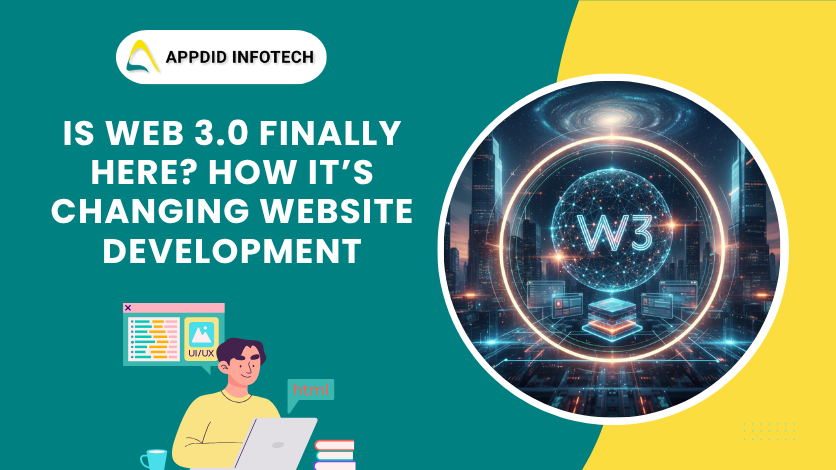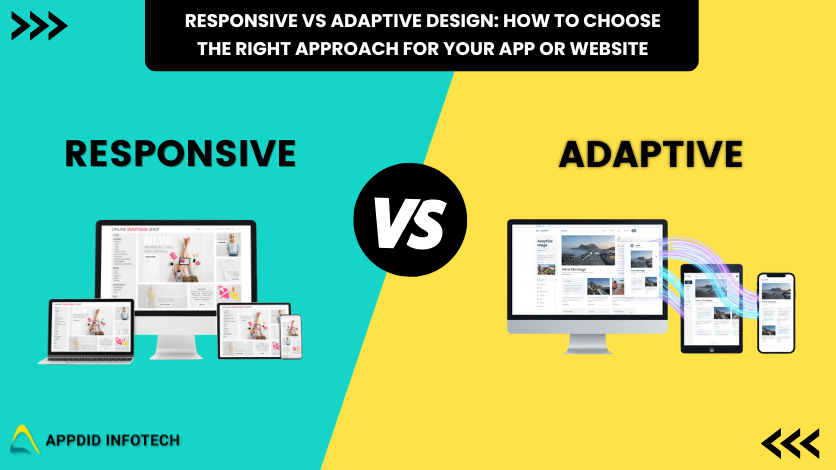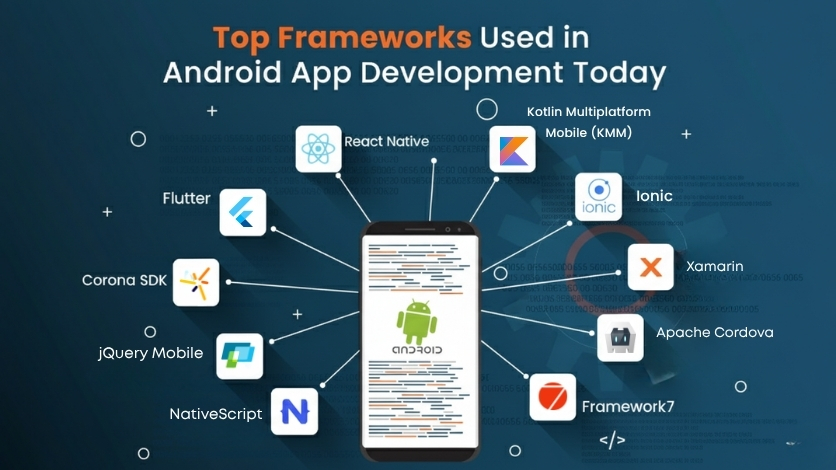Is Web 3.0 Finally Here? How It’s Changing Website Development
Introduction
Remember the early days of the internet when websites were static, text-heavy, and offered little interaction? That was Web 1.0, a one-way communication era. Then came Web 2.0, where interactivity, social media, and user-generated content reshaped the digital world. But as technology continues to evolve, a new era is emerging Web 3.0.
As we enter 2025, it’s becoming clear that Web 3.0 is no longer a concept it’s here, and it’s transforming how we experience the internet. This new phase of the web is redefining website development, enabling more intelligent, secure, and decentralized online experiences.
In this blog, we’ll explore what Web 3.0 really is, how it differs from Web 2.0, and how it’s revolutionizing the future of web development. Whether you’re a developer, business owner, or tech enthusiast, understanding Web 3.0 is essential to stay ahead in the digital revolution.
What Is Web 3.0?
Web 3.0, often called the decentralized web, is the next evolution of the internet built on blockchain, artificial intelligence, and the semantic web. Unlike Web 2.0, where data is controlled by centralized platforms, Web 3.0 empowers users with ownership, transparency, and privacy.
At its core, Web 3.0 aims to create a more open and intelligent internet where machines understand data like humans. It enables peer-to-peer communication, decentralized applications (DApps), and smarter automation without relying on middlemen.
Let’s quickly compare the three generations of the web:
|
Generation |
Key Features |
Control |
Examples |
|
Web 1.0 |
Static websites, read-only |
Centralized |
Early company pages |
|
Web 2.0 |
Social, interactive, user-driven |
Big Tech platforms |
Facebook, YouTube, Twitter |
|
Web 3.0 |
Decentralized, AI-powered, blockchain-based |
Users and communities |
Ethereum, DApps, decentralized social apps |
Web 3.0 is about trustless systems — users don’t need to “trust” intermediaries because the blockchain ensures transparency and security automatically.
The Core Technologies Behind Web 3.0
Web 3.0 stands on a few powerful technologies that are redefining website development:
1. Blockchain and Smart Contracts
Blockchain provides the foundation for decentralization. It allows secure transactions, transparent data records, and tamper-proof authentication. Smart contracts self-executing agreements on the blockchain automate processes like payments or identity verification without third-party interference.
2. Artificial Intelligence and Machine Learning
AI plays a crucial role in making websites smarter. From chatbots and personalization to predictive analytics, AI and Web 3.0 work hand-in-hand to deliver more human-like and adaptive digital experiences.
3. Semantic Web
The semantic web helps computers understand the meaning behind data instead of just processing keywords. This improves content accuracy, search relevance, and overall user experience.
4. Decentralized Storage
Instead of storing data on centralized servers, Web 3.0 uses distributed systems like IPFS (InterPlanetary File System) or Filecoin, making data retrieval faster, safer, and censorship-resistant.
How Web 3.0 Is Changing Website Development
Web 3.0 is completely reshaping how developers design and build digital experiences. Here’s how it’s transforming the industry:
1. Decentralized Hosting and Data Ownership
Traditional websites rely on centralized servers owned by companies. In Web 3.0, data is distributed across networks, giving users ownership and privacy. This shift protects against censorship and hacking.
2. Blockchain-Powered Authentication
Users can log in securely using blockchain-based identities, eliminating the need for traditional usernames and passwords. This boosts trust and eliminates data breaches.
3. AI-Driven Automation
Web 3.0 websites use AI to automate workflows, recommend personalized content, and even make predictive design decisions based on user behavior.
4. Smart Contract Integrations
Websites can now include embedded smart contracts for automatic payments, access control, and real-time transactions especially useful for eCommerce and digital services.
5. Rise of DApps
Decentralized applications (DApps) operate on blockchain networks, not centralized servers. They’re redefining user interaction with web platforms offering transparency, speed, and reliability.
Benefits of Web 3.0 for Developers and Businesses
Adopting Web 3.0 technology brings several advantages for both developers and organizations:
-
Enhanced Transparency: Blockchain records are public and immutable, ensuring trust.
-
Stronger Security: Decentralized systems minimize single points of failure.
-
User Empowerment: Individuals control their data and online identities.
-
Smarter Websites: AI makes platforms adaptive, personalized, and self-improving.
-
New Business Models: Tokenization, NFTs, and decentralized finance (DeFi) open new monetization opportunities.
The future of web development will center around creating connected ecosystems where users, machines, and data interact seamlessly.
Challenges Developers Face with Web 3.0
While Web 3.0 promises innovation, it also introduces challenges developers must address:
-
Technical Complexity: Building on blockchain requires specialized skills in Solidity, smart contracts, and distributed systems.
-
Limited Tools and Frameworks: Compared to mature Web 2.0 tools, Web 3.0 development resources are still evolving.
-
Scalability Issues: Blockchain networks can struggle with high transaction volumes.
-
Regulatory Hurdles: Governments are still defining legal frameworks for decentralized systems and crypto use.
Despite these obstacles, the momentum toward decentralized, AI-driven systems continues to grow rapidly.
Real-World Examples of Web 3.0 in Action
Here are some Web 3.0 examples that showcase its real-world impact:
-
Decentralized Applications (DApps): Apps like Uniswap and Aave operate entirely on blockchain without central control.
-
NFT Marketplaces: OpenSea and Rarible use blockchain to verify digital ownership of assets.
-
Decentralized Social Networks: Platforms like Lens Protocol or Minds let users control their content and data.
-
AI-Powered Personalization: Websites leveraging AI algorithms now adapt content dynamically based on user intent.
These examples highlight how blockchain in web development is paving the way for a more autonomous, user-centered internet.
The Future of Web Development in a Web 3.0 World
Looking ahead, Web 3.0 website development will continue merging blockchain and AI to create an intelligent, interconnected ecosystem. Developers will focus on trustless systems, token-based economies, and data sovereignty.
In the next five years, expect to see:
-
Websites operating as decentralized autonomous systems (DAOs).
-
Smarter content delivery powered by AI and semantic tagging.
-
Seamless integration of digital wallets and cryptographic IDs.
-
More AI-driven web design that automatically adapts to user needs.
Web 3.0 isn’t just another tech upgrade — it’s the next logical evolution of the internet, redefining how people and businesses connect digitally.
FAQs
1. What’s the difference between Web 2.0 and Web 3.0?
Web 2.0 focuses on interactivity and user-generated content but relies on centralized platforms. Web 3.0, on the other hand, introduces decentralization, blockchain, and AI to give users more control and privacy.
2. How does blockchain impact website development?
Blockchain enables decentralized data storage, secure payments, and smart contract automation, making websites safer and more transparent.
3. Can small businesses use Web 3.0 technology?
Yes! Small businesses can integrate blockchain payments, AI chatbots, and decentralized hosting to enhance security and efficiency affordably.
4. Is Web 3.0 secure?
Web 3.0 is built for security, using blockchain’s immutable nature and encryption to protect data, but developers must still follow best practices for safety.
5. How can developers start learning Web 3.0 development?
Begin with blockchain fundamentals, smart contract programming (Solidity), and Web3.js frameworks. Experiment with testnets to understand decentralized application (DApp) architecture.
Conclusion — The Future Is Decentralized with Appdid
The rise of Web 3.0 website development marks a groundbreaking transformation in how we design, build, and experience the web. From AI-driven automation to decentralized networks, the shift is clear the internet is evolving into something smarter, fairer, and more secure.
At Appdid, we’re helping businesses embrace the future of digital innovation. As a leading app and web development company in Thane, Mumbai, If you’re ready to future-proof your business and build next-generation digital experiences, contact Appdid today. Let’s create the future together.









